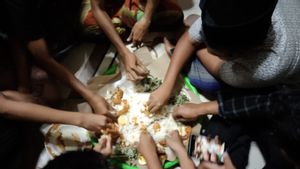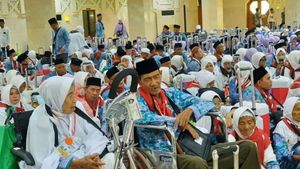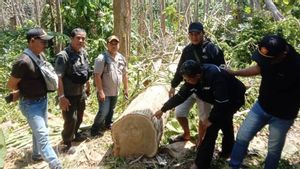
YOGYAKARTA Looking for takjil certainly needs to be selective, especially if you avoid healthy processed snacks. The typical wet cake of Ramadan is the answer to the takjil dish that is not fried. Although there are also dishes of fried cakes, a kind of debus cake, here are the variations of delicious wet cakes if they are included in the takjil Maghrib menu later.
If you avoid food made of gluten flour, putu mayang cake is one of the answers. The cake, which is included in this Betawi culinary, is made from canji flour and rice flour. The shape is quite interesting, such as rolled noodles into one in each of the seeds. Although it has not been found in historical records since when this beautiful wet cake, but Betawi historian Yahya Andi Saputra believes this cake is related to folklore and influenced by putu mayam food from South India.
In texture, it looks like a mud cake, but this Confused cake is printed wider and typical of the Banjar Tribe, South Kalimantan. It tastes sweet and legit with a soft texture. For the people of the Banjar Tribe, this cake is served on important days, such as weddings or congratulations. However, during Ramadan, the snacks that are suitable for takjil are classified as prima donna.
Foods for takjil, especially those classified as wet cakes, have a sweet taste. Dadar rolls slightly different, not only sweet because coconut fills are mixed with coconut sugar, the skin has a savory and soft texture.
Generally, Nagasari made from rice flour mixed with coconut coconut coconut coconuts is then filled with bananas and wrapped in banana leaves and then steamed. This traditional cake that sells well during Ramadan, is also processed healthily. The texture can be included as a comfort food because it is soft so it is safe to eat when the stomach is empty when breaking the fast.
In contrast to the variety of previous Ramadan wet cakes, the ipau wadai has a salty and savory taste due to its filling of meat and vegetables. The cake, which comes from South Kalimantan, is white, round in shape, with a sprinkle of packaged meat on it.
Like darepes, the texture of the wadai ipau is made of flour, eggs, and milk dough. In addition to pruning meat, other fillings are carrots, potatoes, onions, and other vegetables. Uniquely, this cake is cooked by steaming and served with coconut milk and sprinkled with celery.
At first glance, tapa cake is like jade, because it has a beautiful and shiny color. The most popular thing is the sweet potato cake, which of course uses sweet potatoes as one of the ingredients. The taste of the cake which is a culinary accumulation from Betawi, Chinese, and Dutch, is sweet with a soft texture.
If you are buying takjil, it will definitely be difficult to distinguish villagesari and lemets. So it's better to ask the seller, because these two typical Ramadan wet cakes are both wrapped in banana leaves. The sheet is also called utri or ketimus which is a native snack of Central Java.
A sheet made from scarcity cassava mixed with brown sugar and then wrapped in banana leaves before steaming. As it turned out, lemets included documented classical snacks in the Centini Fiber which were published in the 18th century.
관련 항목:
There are a lot of variations in apem cake in the archipelago. Starting from the shape of the doreaki cake, there are also those wrapped in banana leaves, or those that look like steamed cakes. The apem cake made from rice flour is given a little yeast, tape, sugar, and coconut scarcity. He cooks it by steaming it so that it is classified as low cholesterol. Launching the Kemendikbud page, the apem cake comes from India, called an appam.
Carang gesing the main ingredients are banana fruit which is cut into pieces and then given coconut seasoning and a number of typical spices. The aroma of pandan leaves and banana leaves as a wrapper, blends in the snacks from Surakarta, Central Java. Usually, this typical wet cake of Ramadan is very delicious to eat when it is warm.
This traditional Banjar cake is made from rice flour, coconut milk, sugar, and bananas. It tastes sweet and savory with a soft texture so that it is suitable for breaking the fast. At first glance, the shape of this cake looks like fire. Based on the composition of the ingredients, the tatak exposure is similar to the Nagasari cake.
That's a list of typical Ramadan wet cakes that you can enter as takjil variations. Have you ever opened up with the snacks above?
The English, Chinese, Japanese, Arabic, and French versions are automatically generated by the AI. So there may still be inaccuracies in translating, please always see Indonesian as our main language. (system supported by DigitalSiber.id)

















